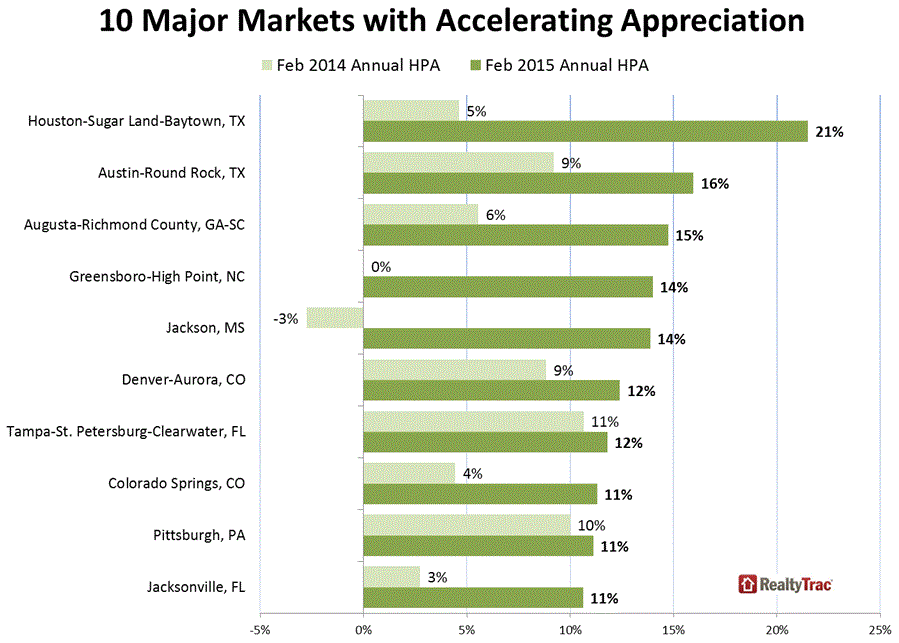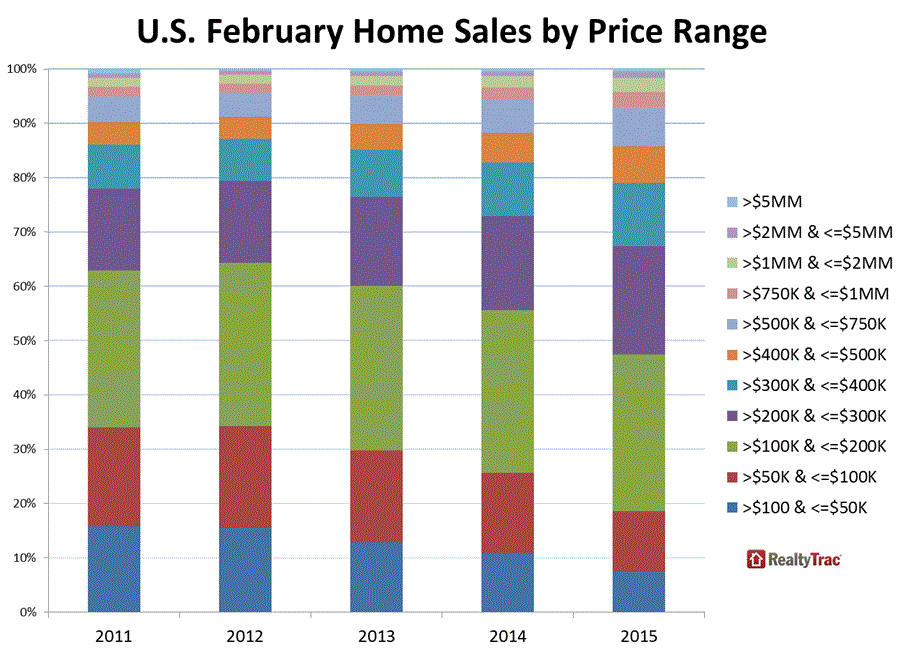Blog

Price Gains Slow in Most Large Markets
Another source is affirming that the rapid growth in homernprices that started in 2013 has continued to slow and that the deceleration isrnbroad based. RealtyTrac’s February HomernPrice Appreciation Analysis found that annual price increases have slowed fromrna year ago in 60 of the 92 large metropolitan areas it tracks. </p
Many of the year-over-year changes werernhuge. In Detroit appreciation slowed tornone-third its earlier pace, from 30 to 10 percent. Riverside-San Bernardino dropped from 24rnpercent to 7 percent, Boston from 16 percent to 3 percent, and in Chicago thernrate of increase dropped 10 percentage points to 6 percent. Increases in New York City, Los Angeles, and Miamirnwere down by at least 50 percent. </p
Prices gains did not slow in allrnlocations of course. Houston’s annualrnappreciation more than quadrupled from a year earlier – from 5 percent to 21rnpercent. Seven of the ten cities withrnthe most rapid acceleration are located in the Sun Belt.</p
 </p
</p
Median prices nationally increased 14rnpercent compared to February 2014 but were unchanged from January atrn$183,000. The median price of arndistressed property increased 13 percent on an annual basis to $127,000 whichrnrepresents a 33 percent discount from market prices. </p
Part of the continuing thoughrndiminished rise in home prices can be accounted for by a shrinking of thernproportion of sales at the lower end of the market. The share of sales of homes under $200,000rnhave fallen from 63 percent in February 2011 to 47.4 percent in February 2014rnwith virtually all of that decrease coming from sales under $100,000. During the same period the share of sales inrnevery other price category except homes over $5 million (which declined by 15rnpercent) have risen by double digits. </p
 </p
</p
“While still significant at 33 percent,rnthe average discount buyers are realizing on distressed homes has beenrnshrinking over the past 18 months after hitting a high of 40 percent inrnSeptember 2013,” said Daren Blomquist, vice president at RealtyTrac. “Inventoryrnof distressed properties is drying up in many markets even while demand forrnthose properties – which typically fall into the target market for bothrninvestors and first-time homebuyers – is ramping up. That is in turn resultingrnin nationwide home prices skewing higher as a smaller share of homes sell atrnthe lower end of the market.”</p
The recovery has helped 17 metro areasrn(18 percent of the 92 areas studied) reach new peaks in median home prices inrn2014 including Denver, Colorado ($265,000), San Jose, California ($714,750),rnChattanooga, Tennessee ($130,000), Madison, Wisconsin ($215,900) and Nashville,rnTennessee ($175,000).
All Content Copyright © 2003 – 2009 Brown House Media, Inc. All Rights Reserved.nReproduction in any form without permission of MortgageNewsDaily.com is prohibited.
Latest Articles
By John Gittelsohn August 24, 2020, 4:00 AM PDT Some of the largest real estate investors are walking away from Read More...
Late-Stage Delinquencies are SurgingAug 21 2020, 11:59AM Like the report from Black Knight earlier today, the second quarter National Delinquency Survey from the Read More...
Published by the Federal Reserve Bank of San FranciscoIt was recently published by the Federal Reserve Bank of San Francisco, which is about as official as you can Read More...

Comments
Leave a Comment